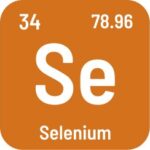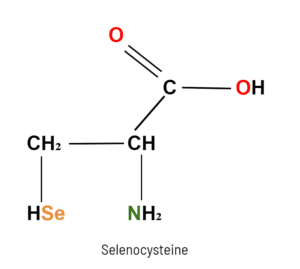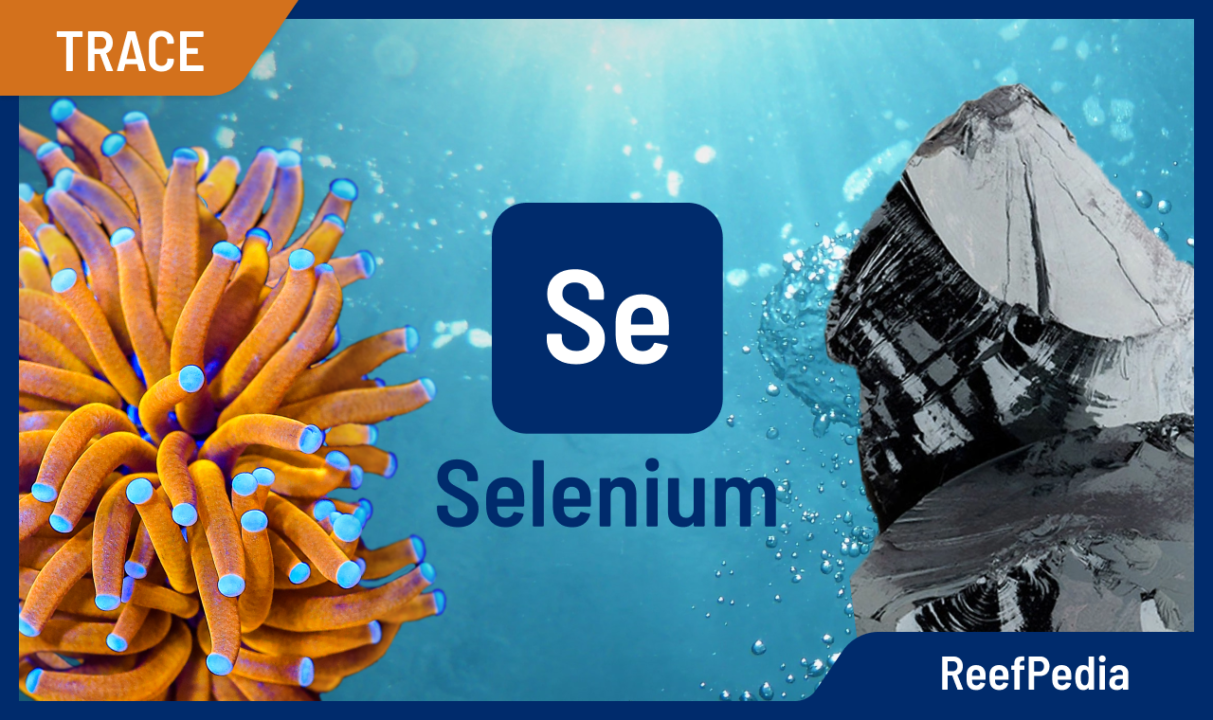Table of Contents
What is SELENIUM (Se)?
 Selenium (Se, Latin: selenium) is an element classified as a nonmetal, located in the sixteenth group of the periodic table, known as the chalcogens group*. It has a chemical structure very similar to sulfur (S), which is also in the same group of the periodic table. Selenium occurs in small amounts in the Earth’s crust, mainly as a contaminant in some sulfide ores.
Selenium (Se, Latin: selenium) is an element classified as a nonmetal, located in the sixteenth group of the periodic table, known as the chalcogens group*. It has a chemical structure very similar to sulfur (S), which is also in the same group of the periodic table. Selenium occurs in small amounts in the Earth’s crust, mainly as a contaminant in some sulfide ores.
The importance of selenium in seawater
Selenium at levels undetectable by ICP-OES devices is a trace element desirable in aquariums, especially with a predominant SPS population. Higher selenium concentrations become toxic to corals.
It’s worth noting that the amount of selenium in saltwater necessary for animals’ proper development is so low that it often isn’t detectable by analytical methods used for this purpose. This doesn’t always mean it’s absent; the detection limits of devices determine its detectability (LOD – Limit of Detection).
The role of selenium in saltwater aquariums
The importance of selenium, a trace element in seawater, lies primarily in areas such as:
Biological processes (enzymatic processes)
Selenium is part of many enzymes essential for the proper functioning of metabolic pathways.
Biological processes (protective role)
This element is also a component of the amino acid selenocysteine. Selenocysteine is an organic chemical compound similar in structure to cysteine (an amino acid), but with selenium instead of sulfur. This amino acid is present in many enzymatic proteins. It also serves a protective function for the cell membrane, shielding it from oxidative damage. The antioxidant mechanism is especially important for corals, which are exposed to high levels of radiation. Selenium prevents damage to cell membranes by oxygen.

Biological processes (nutritional role)
Selenium, combined with vitamins, aids in the absorption of nutrients.
Threats associated with selenium deficiency and excess in saltwater aquariums
Under normal circumstances, selenium is supplied to the aquarium along with plankton and frozen foods, meeting the organisms’ demand for this element. However, excessive selenium in saltwater is undesirable as it becomes toxic to animals. High levels can lead to health issues and even death among corals and other creatures.
How to protect your aquarium?
It is important to regularly monitor the selenium content and maintain it at undetectable levels. Such a selenium level in saltwater ensures the health and vibrant coloration of marine animals.
The most accurate and reliable method for determining selenium is through ICP-OES analysis. Inductively Coupled Plasma Optical Emission Spectrometry (ICP-OES) is the most precise analytical method for assessing the elemental composition of saltwater.
Indicators of abnormal selenium levels in a marine aquarium
The species of animals or algae sensitive to selenium overdoses or deficiencies, known as indicators, are not yet identified. Both excess and deficiency of this trace element have a negative impact on most animals.
Deficiency:
- increased tissue transparency,
- light sensitivity,
- poor growth.
Excess:
- partial tissue damage,
- tissue detachment,
- death of corals and other marine animals.
Recommendations
To ensure the proper level of selenium in the aquarium, you should systematically test it. If the selenium level remains high for an extended period, it may lead to health problems for corals and other animals and even their death. The most common causes of exceeding the recommended level of selenium are:
- contaminated salt,
- excessive doses of administered supplements,
- frozen foods.
Find and eliminate the cause of the problem and reduce the value of this parameter in the water. Perform up to 6 water changes. It is recommended to replace about 15% of the aquarium water during each change until the recommended value of this parameter is achieved. The water prepared for the change must have the appropriate target salinity level. Use salt with the right parameters and composition suitable for conducting an ICP test.
Summary
The presence of selenium in a saltwater aquarium can have both positive and potentially negative effects. As a trace element, selenium is desirable in marine aquariums, especially with a predominance of SPS corals, where its small amount supports the health and development of marine organisms. Selenium is part of many enzymes and is a component of the amino acid selenocysteine, highlighting its role in the protection and nutrition of corals.
However, the presence of selenium in larger amounts can become toxic, leading to health problems, tissue damage, and even the death of corals and other marine animals. To avoid the negative effects of selenium excess, it is recommended to regularly monitor its content in the aquarium, keeping it at undetectable levels using ICP-OES analysis.
*The name “chalcogens” comes from the name of the first element placed at the top of the sixteenth column of the periodic table (Oxygen – O). Elements in this group share similar properties.
About author

Magdalena Metzler
Privately, I am a mother and a lover of nature and sport. My main interest is quantum chemistry, which hides a whole lot of unsolved mysteries and connections, which is extremely exciting from a scientific point of view.
In my scientific career, I have conducted international projects focused on innovative solutions for many branches of business, e.g. automotive, construction, and now, of course, marine aquaristics.
Working at Reef Factory gave me a passion for marine aquaristics, which I can develop every day, building a chemistry department and creating products that will help aquarists take care of tanks and ensure the highest safety of animals. One of the most exciting memories of working at Reef Factory is the commissioning of the ICP-OES spectrometer, which analyzes the elemental composition of seawater. The method of analysis in ICP is based on an analytical technique, which is a combination of my passion for quantum chemistry and marine aquaristics.
I hope you find my articles on ReefPedia interesting and helpful! Happy reading :))

